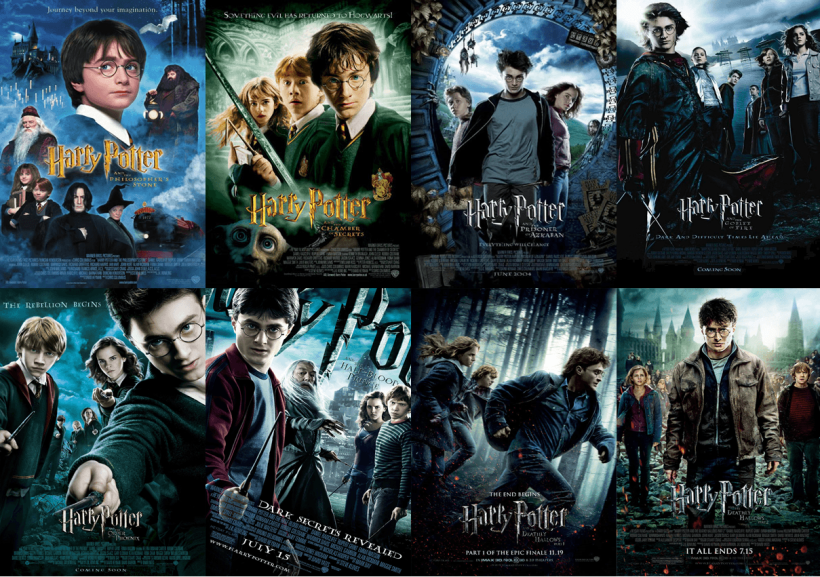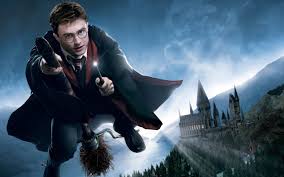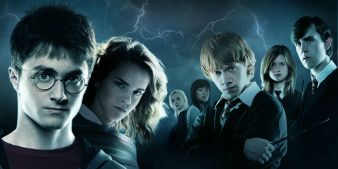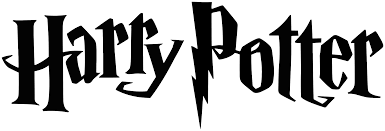Hey everyone! My name is Victoria Zemil. I am a senior at Towson University. I am a Mass Communications major with a dual track in Advertising and Public Relations. I am currently taking the course, MCOM 352, aka Media Criticism with Dr. Nichols. This class is pretty interesting to say the least! We talk a lot about how the media influences our day-to-day lives, as well as how we think/ act. We study different theories and practices and apply them to different media texts, mainly television, and use this knowledge to enhance our media literacy skills as well as how they shape our social, cultural, political, and economic world we live in.
Studying media criticism is important for many reasons. Media criticism can be defined a systematic (rigorous, organized) and critical process (critique of text, using knowledge from social sciences/humanities) used to understand media texts (popular culture, cultural product) as meaningful sociocultural symbolic forms and forces (media as powerful forces shaping culture and society). I know, that’s a mouthful! This study provides us with “tools” to evaluate these texts, and is used to examine the text itself, production of the text, audience reception of the text, and the impact of the text on society and culture. We live in a media-saturated environment and it is critical that we understand the ways the media influences us. Media is a powerful force that shapes both our individual lives and society and culture. In our class, we focus on the macro level. Television has the power to entertain, inform, socialize, interpret, educate, and create a sense of community.
To help explain how media criticism is important, I will use an example of a media text that has an influence on our society and culture. I am very interested in the “Harry Potter” series and I feel as if this series has had a big impact on our society and culture.

For those who don’t know about Harry Potter, it is a series of novels written by J.K Rowling, as well as 8 films. The novels include the chronicles of a young British boy who learns he is a wizard at the age of 11. He and his two best friends, as well as other witches and wizards, attend Hogwarts School of Witchcraft and Wizardry. The plot includes Harry’s struggle against Lord Voldemort, a dark wizard who intends to become immortal. This series fits into many genres, including fantasy, drama, young-adult fiction, mystery, thriller, and Bildungsroman (coming-of-age story).
The type of text-centered approach I will use to help elaborate is narrative analysis. In narrative analysis, we discuss how we use stories to make sense of our lives and the world around us. Narrative analysis is defined as a systematic study of texts and how they are structured into a cause-and-effect chain with a beginning, middle, and end. So, basically, we look at how the understanding of the sequence of these events helps us reveal the potential meaning embedded in texts.
 In Harry Potter, there is a clear beginning, middle, and end that all relate to one another. These parts of the story influence one another to help the story make sense. Some terms that are used in narrative analysis are: story, plot, and emplotment. The story is defined as the chain of explicit (presented) and implicit (inferred) events and happenings. The plot is all that is visibly and audibly presented to us (what the author/ director wants to show us). The emplotment is the selection and arrangement of events/ happenings into a coherent narrative (how the author/ director shows it to us). So, in Harry Potter, the story is the storyline behind the entire series of films. Harry is born, his parents are killed by Lord Voldemort, he is adopted by his aunt and uncle, he learns he is a wizard, he attends Hogwarts… you get the picture! The plot is the story that is shown to us in the novels/ films. The story and plot are very similar, except the plot is what is actually shown to us. So, for example, in the first film, we do not see Harry being born. So, that is not part of the plot. But, it is part of the story because we infer that it happens. Finally, the emplotment is the order in which the story is told to us. So, it is told to us in the order that first he finds out he is a wizard, then he finds out his parents were murdered, then he goes to Hogwarts… all of these terms are very similar, they just have some minor differences.
In Harry Potter, there is a clear beginning, middle, and end that all relate to one another. These parts of the story influence one another to help the story make sense. Some terms that are used in narrative analysis are: story, plot, and emplotment. The story is defined as the chain of explicit (presented) and implicit (inferred) events and happenings. The plot is all that is visibly and audibly presented to us (what the author/ director wants to show us). The emplotment is the selection and arrangement of events/ happenings into a coherent narrative (how the author/ director shows it to us). So, in Harry Potter, the story is the storyline behind the entire series of films. Harry is born, his parents are killed by Lord Voldemort, he is adopted by his aunt and uncle, he learns he is a wizard, he attends Hogwarts… you get the picture! The plot is the story that is shown to us in the novels/ films. The story and plot are very similar, except the plot is what is actually shown to us. So, for example, in the first film, we do not see Harry being born. So, that is not part of the plot. But, it is part of the story because we infer that it happens. Finally, the emplotment is the order in which the story is told to us. So, it is told to us in the order that first he finds out he is a wizard, then he finds out his parents were murdered, then he goes to Hogwarts… all of these terms are very similar, they just have some minor differences.
There are three approaches to narrative analysis, which include Aristotelian, Visualist, and Structuralist. I will be elaborating on an aspect of the Structuralist approach. The structuralist approach uses semiotic/ structuralism to understand the plot. We use this approach to understand narratives through emplotment and how the storyteller developed a coherent sequence of events to make meaning, as well as to understand the implications of a narrative’s power to shape our lives (social, cultural, political). There are 3 structural theorists we study in media criticism, and they are Vladimir Propp, Tzvetan Todorov, and Claude Levi-Strauss. I will be elaborating on Propp’s contributions to structuralism. Propp was a Russian literary critic, and focused on the “morphology of the folktale.” He examined folk tales/stories by 31 narrative functions, and 8 character roles (spheres of action). These roles are the villain, the hero, the donor, the (magical) helper, the princess, her father, the dispatcher, and the false hero/anti-hero. For Harry Potter, I will elaborate on these character roles.
In Harry P otter, the roles are given to many different characters. The first role, the villain, is defined as the individual(s) who seeks to disrupt the equilibrium, and struggles against the hero. This character is Lord Voldemort, the evil wizard who is attempting to kill Harry throughout the series. The next role, the hero, is the individual(s) whose quest is to restore the equilibrium, often motivated by lack of something (money, love, respect, etc). This character is obviously Harry Potter because he is searching to restore safety to Hogwarts. His hatred for Voldemort is motivated by the love of his parents, because Voldemort killed them. There are many characters that can identify as the donor, such as Albus Dumbledore or Sirius Black. Dumbledore acts as Harry’s mentor throughout the series, and gives him advice and help when he needs it. He also gives him certain tools to help him defeat Voldemort when the time comes. Sirius is Harry’s godfather who comes into the story in the third novel/film, but he is introduced as a villain. His reputation is cleared and ever since he has been like a mentor to Harry as well. The next role is the (magical) helper. This/these individual(s) aid the hero(s) in quest for equilibrium. Many characters identify as this throughout the series, because they help Harry fight Voldemort. But, the two main helpers throughout the series are his two best friends, Ron and Hermoine. They have been by his side through it all, and they go on missions and conquests with him whenever need be. The next role is called the princess. This is the individual(s) who need help, protecting, and saving. The princess can be male or female, and I would say Harry identifies as the princess. Throughout the series, Harry is in danger and people are helping to protect and help him. The dispatcher is the last character that is identified in Harry Potter. This character is the individual(s) who send the hero(s) on the quest for equilibrium. In this series, this character would be Dumbledore because he tells Harry about the connection between him and Voldemort, and reveals that one must live and one must die.
otter, the roles are given to many different characters. The first role, the villain, is defined as the individual(s) who seeks to disrupt the equilibrium, and struggles against the hero. This character is Lord Voldemort, the evil wizard who is attempting to kill Harry throughout the series. The next role, the hero, is the individual(s) whose quest is to restore the equilibrium, often motivated by lack of something (money, love, respect, etc). This character is obviously Harry Potter because he is searching to restore safety to Hogwarts. His hatred for Voldemort is motivated by the love of his parents, because Voldemort killed them. There are many characters that can identify as the donor, such as Albus Dumbledore or Sirius Black. Dumbledore acts as Harry’s mentor throughout the series, and gives him advice and help when he needs it. He also gives him certain tools to help him defeat Voldemort when the time comes. Sirius is Harry’s godfather who comes into the story in the third novel/film, but he is introduced as a villain. His reputation is cleared and ever since he has been like a mentor to Harry as well. The next role is the (magical) helper. This/these individual(s) aid the hero(s) in quest for equilibrium. Many characters identify as this throughout the series, because they help Harry fight Voldemort. But, the two main helpers throughout the series are his two best friends, Ron and Hermoine. They have been by his side through it all, and they go on missions and conquests with him whenever need be. The next role is called the princess. This is the individual(s) who need help, protecting, and saving. The princess can be male or female, and I would say Harry identifies as the princess. Throughout the series, Harry is in danger and people are helping to protect and help him. The dispatcher is the last character that is identified in Harry Potter. This character is the individual(s) who send the hero(s) on the quest for equilibrium. In this series, this character would be Dumbledore because he tells Harry about the connection between him and Voldemort, and reveals that one must live and one must die.
So, after reading all of this, you may be thinking…why does any of this matter? Well, I’ll tell you why. As I said before, we study media criticism for many reasons, but the main reason is that media has such a heavy influence on our society. The ideologies that are portrayed throughout media texts help shape us as individuals as well as help us live our day-to-day lives. Harry Potter has a lot of underlying themes that contribute to our society and how we think about our world. The main themes in this series are death, prejudice, corruption, and madness. There are other themes that are entrenched in the plot, such as love, power, and violence. All of these factors contribute to what viewers think about our culture and societal norms. Although this series is based in a magical world, and many people understand that a lot of the ideas are fictional, the underlying themes teach us a lot. For example, we characters are faced with death quite often throughout the series. As viewers, we see how these characters react to the death of their loved ones and use this in our own lives when someone dies. Another example may be the theme of prejudice/ power, and how the death eaters (followers of Lord Voldemort) see themselves as more powerful and higher class, although this is not always the case. They talk down to the witches and wizards who do not support Voldemort and treat them poorly. We then take this into account for our real lives and can apply this to the concept of bullying, where bullies think they are more powerful and higher than others, when this is not reality.

Overall, studying media criticism is important inour society because there are so many messages embedded in the media texts we see each and everyday that affect us on a subconscious level. If we take the time to study and evaluate these texts, we can better understand the messages the creators are trying to get across, and understand the ideologies behind it.